#Velyka novosilka
Text
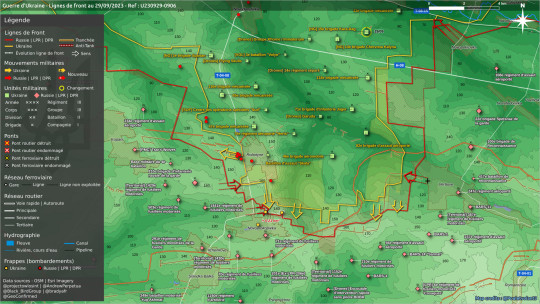


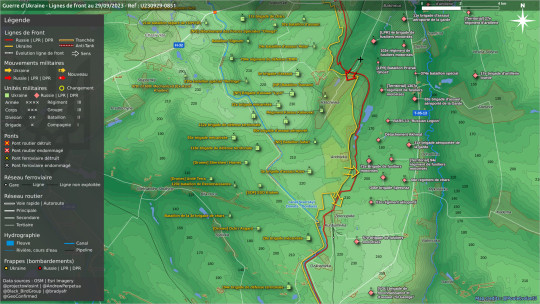
1/2 Guerra de Ucrania | 29/09/23
Sectores:
Robotyne 💠U230929-0906
Robotyne (zoom) 💠U230929-0917
Velyka novosilka-Urozhaine 💠U230929-0901
Bakhmut-Kurdiumivka 💠U230929-0851
#UcraniaGuerraRusa #GuerraEnUcrania
FUENTE
#russia#ukraine#maps#battle map#zaporizhzhia#robotyne#Velyka novosilka#urozhaine#donbass#bakhmut#kurdiumivka#rusia#ucrania#russian aggression#ukraine war
2 notes
·
View notes
Video
youtube
One thing I’ve noticed about Ukrainians since the start of Russia’s war of aggression is that they are world-class pet lovers.
When refugees first fled the country, many were seen bringing their cats, dogs, and birds along with them. Members of the Ukrainian armed forces frequently adopt stray dogs and cats whose owners may have been killed or seriously injured by Russian invaders.
The video above shows residents of Velyka Novosilka which is on the front line in the eastern part of the country. The people in this town ravaged by battles apparently use their own scarce resources to take care of animals made homeless by the war.
#invasion of ukraine#russian aggression in ukraine#russia#vladimir putin#velyka novosilka#animals#pets#вторгнення оркостану в україну#владимир путин#путин хуйло#нет войне#руки прочь от украины!#домашні тварини#україна переможе#слава україні!#героям слава!#велика новосілка#stand with ukraine
2 notes
·
View notes
Text
At midnight, the Russians fired two rockets at Kramatorsk, the factory was damaged, — Police of Donetsk region.
In addition, during the day, the occupiers attacked 5 settlements in the region, wounding 4 people.
The occupiers hit Chasiv Yar with artillery, wounding 4 civilians. Four apartment buildings were destroyed.
The occupiers fought in Velyka Novosilka from "Hrad". The population was not injured.
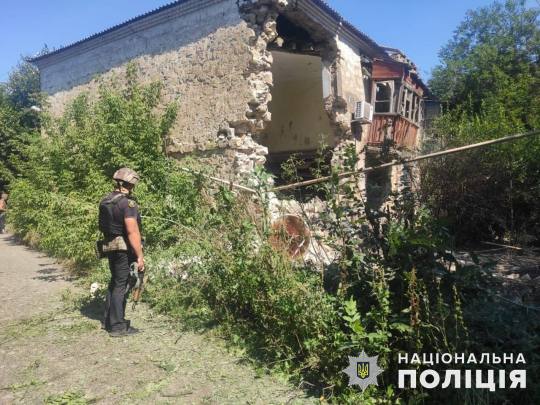
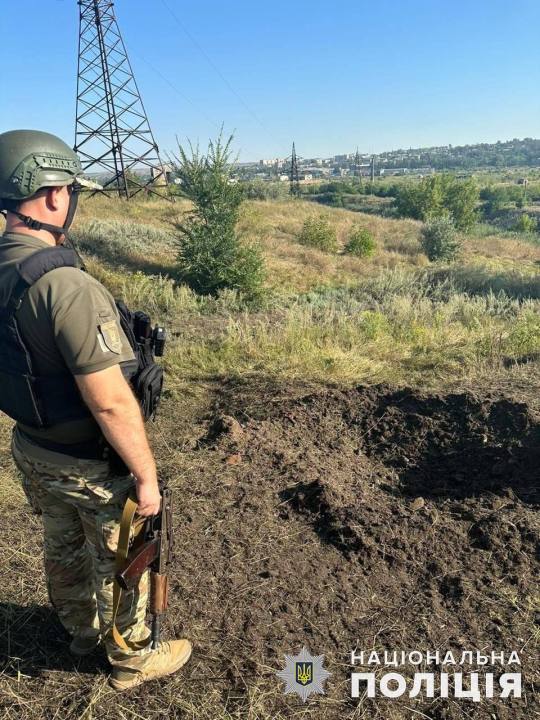

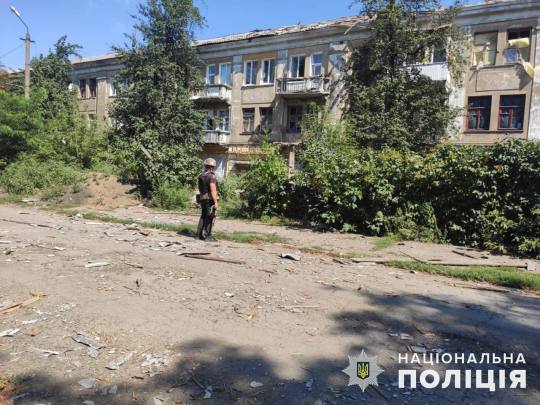
#ukraine#russia is a terrorist state#russia invades ukraine#russian war crimes#russia ukraine war#russian invasion#russian agression#russian terrorism#russia must burn#russia
22 notes
·
View notes
Text
Ukrainian forces made tactically significant advances in western Zaporizhia Oblast amid continued counteroffensive operations on at least three sectors of the front on August 11. Geolocated footage published on August 11 confirms that Ukrainian forces reached the northern outskirts of Robotyne (10km south of Orikhiv) in western Zaporizhia Oblast, though the permanence and extent of these positions are currently unclear. Ukrainian forces have conducted regular ground attacks towards Robotyne for weeks as part of their operations aimed at degrading Russian defenses. The Ukrainian forces’ ability to advance to the outskirts of Robotyne — which Russian forces have dedicated significant effort, time, and resources to defend — remains significant even if Ukrainian gains are limited at this time. Geolocated footage published on August 11 shows that Ukrainian forces advanced into Urozhaine (9km south of Velyka Novosilka) along the Donetsk-Zaporizhia Oblast border area. Russian milbloggers claimed that Ukrainian forces pushed Russian forces back into the settlement on August 10 and 11. The Ukrainian General Staff reported that Ukrainian forces continued counteroffensive operations in the Bakhmut, Berdyansk (Donetsk-Zaporizhia Oblast border area), and Melitopol (western Zaporizhia Oblast) directions.
the war is horrendously costly and the trend continues in favour of a return to the status quo before it began
22 notes
·
View notes
Text
[Russian Forces target a Ukrainian gun truck using the latest generation of Lancet drone]
🇷🇺🇺🇦 🚨 💥UPDATE ON THE RUSSO-UKRAINIAN WAR, EVENTS OF DAY 625💥
According to the Ministry of Defense of the Russian Federation, Russian air defenses working in the SVO Zone destroyed one MiG-29 belonging to the Armed Forces of Ukraine (UAF), Intercepted 5-HIMARS shells, and destroyed 38 UAVs.
In the South Donetsk direction:
Russian Forces are very heavily bombing Ukrainian positions, ammo depots, concentrations of manpower and equipment in Konstiantynivka and Katerynivka.
According to video evidence, Russian Forces were using FAB500 guided bombs to target a Ukrainian ammo depot in Konstiantynivka.
A second video geolocated to Katerynivka shows the successful targeting of a Ukrainian artillery system in this area.
In the north of Mykilske, Russian Forces launched a series of waves of attacks using a variety of MLRS, bombs, drones and artillery before launching ground operations in this area, however the results of Russian operations in Mykilske have not yet been confirmed.
Russian Forces were also using FPV drones to target Ukrainian positions on the eastern outskirts of Vuhledar.
In the Vremivka salient direction:
In the Velyka Novosilka area, Russian Forces used a Lancet drone to successfully target a Ukrainian vehicle on the western flank of the village.
Russian Forces were conducting operations on the western flank of Urazhainoye and Makarivka in recent days, however evidence from this area is lacking.
In the Avdiivka/Donetsk direction:
According to the Ministry of Defense of the Russian Federation, Ukrainian Forces as a result of fighting in the Donetsk direction lost 305 soldiers.
On the north of Avdiivka, Russian Forces have taken the eastern area of Stepove, establishing control over the first streets of the village and launching clearing operations in the eastern residential areas according to both Russian and Ukrainian sources and published videos.
The Ukranian Armed Forces (UAF) published two videos evidencing the Russian advance in this area.
In one published video, Ukrainian Forces were bombing and shelling recently captured Russian positions inside the village of Stepove, followed by an assault by a lone armored vehicle, working on Russian positions using machine gun fire before quickly retreating to continue bombing using FPV drones.
In a second Ukrainian video, a single Ukrainian Leopard MBT and a single Bradley assault positions recently captured by Russian Forces along the railways north of Stepove, however this video was published out of context, and took place before the events in Stepove.
In the south of Avdiivka, Russian Forces launched further offensive operations from the south and southeast of Avdiivka towards the city, improving their positions according to Russian sources, however video evidence is lacking at the moment.
Russian Forces published video showing their work pummeling Ukrainian fortified positions in the southern residential outskirts of Avdiivka, heavily bombing and shelling the same area Russian sources now claim their Forces are attacking towards at this moment.
A second line of attack comes directly to the south of the city, in the direction of Sobornai Street on the southern outskirts.
Russian sources published video of the Russian Airborne Forces heavily bombing Ukrainian fortified positions near the Sobornai Street area and the southern Avidiivka residential areas using a variety of bombs, missiles, and Multiple Launch Rocket Systems (MLRS), targeting fortified trench networks, tunnels, equipment and other fortified positions.
Another published video showed Russian Forces in the area targeting the area of the bridge on the southern part of Sobornai Street using some kind of delayed munition with a large explosion, supposed to house machine gun nests and other firing positions of Ukrainian Forces.
In the west of Avdiivka, in the vicinity of Tonenke, Russian Forces targeted a Ukrainian t-64 MBT north of the village along the treelines.
No other updates from this area, positional fighting continues.In the east of Avdiivka, Ukrainian Forces published a video of the successful targeting of a concentration of Russian armored vehicles using HIMARS MLRS in northeastern Donetsk, in the forest line areas in the vicinity of the village of Krynychna.
Ukrainian Forces were also heavily bombing Russian positions using FPV drones to bomb Russian supply roads in the vicinity of Verkhnitoretske according to video evidence published by Ukrainian sources, and also in the area north of the village of Yasynuvata, also using FPV drones to target Russian armored vehicles and equipment in this area.
Although most of these videos show evidence of suppressive technologies, successful targeting of Russian equipment in the Donetsk area is still a problem for Russian Forces here, as well as for Ukrainian Forces.
In the Zaporizhzhia direction:
According to the Ministry of Defense of the Russian Federation, as a result of fighting in the vicinity of Robotyne, Ukrainian losses amounted up to 50 soldiers and one MiG-29 in the Zaporizhzhia direction.
Russian Forces published video in the vicinity of eastern Robotyne showing the use of MLRS on the concentrations of Ukrainian manpower in this territory.
Russian Forces were also bombing and shelling Ukrainian concentrations of manpower in the trenches in the south and east of Robotyne using a deadly combination of drones and artillery, repelling an attack before it came.
In the Kherson direction:
According to the Russian Ministry of Defense, as a result of complex fire damage, Unrainian Forces in the Kherson area lost up to 60 soldiers.
Russian Forces continued using FAB500 to flatten Ukrainian warehouses and ammunition depots in Baryslav and to its north, in the area north of the Ukrainian foothold in Krynky and the staging ground for offensive operations in this area.
In the vicinity of Prydniprovske, drone footage of the areas under heavy Russian shelling show evidence of dozens of dead Ukrainian infantry in this area unable to be evacuated under constant shelling.
In the Artemovsk direction:
two major updates.
In the Klischiivka area, Russian videos showed heavy usage of FPV drones to clear Ukrainian positions on the north of Klischiivka, confirming Ukrainian control over the northern residential outskirts under heavy Russian assault.
Only a small part of the forest patch area well to the north of the residential outskirts of Klischiivka has been recaptured by Russian Forces as of yet.
In Andriivka, Russian Forces recaptured the area east of the rail lines east of Andriivka that was recently captured by Ukrainian counteroffensive operations in the area.
However, caution is warranted as video is lacking for Andriivka.
In the Siversk direction:
Ukraine Forces rely heavily on FPV drone in this area to assault the supply roads for Russian Forces in the vicinity of Verkhnokomianka, with video showing the targeting of a Russian vehicle on the supply road south of the town.
Russian Forces continue using FAB500 to target Ukrainian strongholds and ammo depots in the area north of Soledar in the vicinity of Rozdolivka.
Ukrainian Forces also published video showing the successful strike against a Russian armored vehicle in the area north of Berestove.
Frontlines remain stable, no changes in territory.
In the Lyman/Kupiansk direction:
According to the Russian Ministry of Defense, as a result of positional fighting in the Kupiansk direction, Ukrainian Forces lost 80 soldiers in this area.
Russian Forces were using FPV dronehe target Ukrainian positions in the vicinity of Dvorichna, with video showing the successful targeting of a Ukrainian stronghold, the third successful targeting video in three days in this city.
No changes in the Krasni Lyman/Kupiansk/Kharkiv territories.
In total, since the beginning of the special military operation, the following have been destroyed: 534 aircraft, 254 helicopters, 8829 unmanned aerial vehicles, 441 anti-aircraft missile systems, 13346 tanks and other armored combat vehicles, 1183 combat vehicles of multiple launch rocket systems, 7059 field artillery guns and mortars, and also 15,194 units of special military vehicles.
@WorkerSolidarityNews
#russo ukrainian war#russia ukraine war#russia ukraine conflict#russia ukraine today#russia#ukraine#russia news#ukraine news#ukraine war#special military operation#russian smo#smo#news#war#eastern europe#eurasia#war news#war update#world news#international news#international affairs#global news#breaking news#current events#politics#geopolitics#ukraine proxy war#us wars#us news
8 notes
·
View notes
Text
I do not know what Washington Post columnist David Ignatius or the Biden administration officials he is talking to are smoking, but it must be extraordinary strong stuff:
Administration officials were encouraged by better-than-expected progress Monday, as Ukrainian units pushed through heavily mined areas to advance between five and 10 kilometers in some areas of the long front. That raised hopes that Ukrainian forces can keep thrusting toward Mariupol, Melitopol and other Russian-held places along the coast — severing the land bridge.
The 'thrust' was against a small Russian held salient in the front line near Velyka Novosilka at the center of this map.
Zooming in we see the current frontline as depicted by the Ukraine friendly LiveUAmap.
Using the 'Time' feature of that map we can see the front line in the same area one week ago.
Using the scale at the bottom right of the map we can tell that the sole total 'progress' of the Ukrainian forces on the upper left was about two kilometers deep on a four kilometer wide front. They conquered two tree lines between open fields. Not one settlement of farm was 'liberated' by those forces.
Here is the same place depicted on the map of the pro-Ukrainian neoconservative Institute for the Study of War.
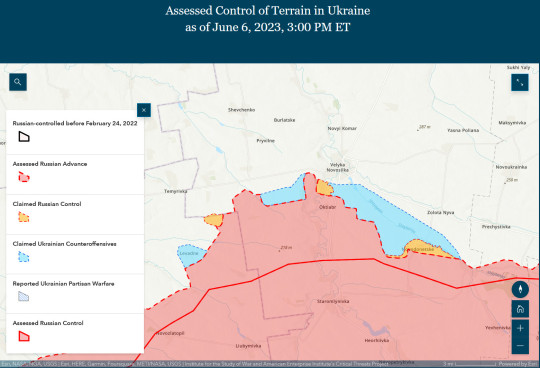
It shows the same story. Again the 'progress' of the Ukrainian forces was limited to some treelines between flat open fields.
It came at enormous cost:
During the three days of combat operations in all directions Ukraine lost up to 3,715 men, 52 tanks and 207 armored combat vehicles, 134 trucks, 48 field artillery guns, as well as five aircraft, two helicopters and 53 drones.
Russia’s losses were immeasurably smaller: "Altogether 71 servicemen of the combined group of forces were killed and 210 others wounded while repulsing the enemy offensive. Fifteen tanks, nine infantry fighting vehicles, two trucks and nine guns were taken out."
That's Russian propaganda you say? Yes, you may want to cut those numbers in half to get to the real ones. They are still enormous.
Gilbert Doctorow notes that The Ukrainian Army is run not by the Generals but by the PR Department. Accordingly the demolition of Kakhovka dam is a diversion from the disastrous losses of the last few days.
The Russian Defense Minister Sergei Shoigu said that the dam damage was done to allow for the transfer of Ukrainian forces (machine translation):
"Tonight, the Kiev regime committed another terrorist crime: the Kakhovskaya hydroelectric power station was blown up, which led to the flooding of large areas," he said.
The minister added that the purpose of undermining the Kakhovskaya hydroelectric power station by Kiev is to transfer units of the Armed Forces of Ukraine (AFU) from the Kherson direction to the offensive area.
He pointed out that the Kiev regime had blown up the structures of the Kakhovskaya hydroelectric power station. "The purpose of these actions, according to available data, is as follows. Having not achieved success in offensive operations, in order to strengthen its potential, the enemy intends to transfer units and equipment from the Kherson direction to the area of its offensive operations, thus significantly weakening its positions in the Kherson direction," Shoigu said.
I have a different reading of the situation. With the dam intact any large crossing of the lower Dnieper would be endangered by the ability of the other side to release water from the dam. With the dam blown up flooding will, for a week or two, turn the area along the river into a swamp. But after two weeks or so the water will be gone and a large crossing, without the danger of being flooded, will become possible. This reading is based on several reports of ferrying and bridging units being transferred to Ukraine:
Russia has depended upon unbridged waterways and other geographical features for a measure of security. As Ukrainian armored bridging units begin to emerge in battle, Russia will be challenged by the sudden emergence of fast-moving Ukrainian units in lightly-defended areas.
Bridging units are really some of the last few pieces Ukraine requires to take the offensive. The fact that they are getting donated now can only be interpreted as a sign that American experts feel confident that Ukraine is finally ready to employ their new, highly-mobile equipment effectively, at scale, and in large offensive operations.
Then again - Shoigu will surely have better access to battlefield information than I do.
Back to Ignatius class delusions:
It might take weeks before the results of the Ukrainian campaign are clear, but Kyiv has already succeeded in expanding the stalemated fighting in Bakhmut, the bitterly contested eastern city that was ground zero throughout the winter.
Ahem - Ukraine was utterly defeated in Bakhmut and no longer holds any ground within that city.
If it wants to expand on that the Russians will surely welcome it to do so.
3 notes
·
View notes
Text
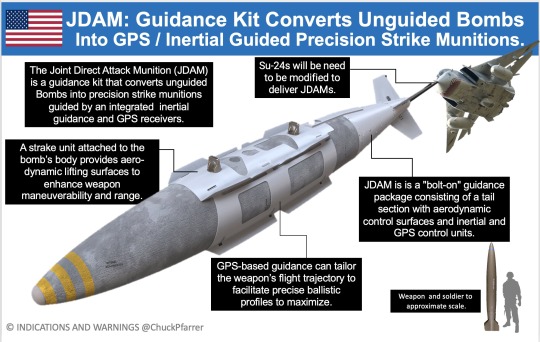
DOOR KNOCKER: Ukraine’s recent breakthroughs south of Velyka Novosilka were preceded by a JDAM strike on a Russian HQ element at Urozhaine. JADAM kits allow Ukraine to deliver Mk-84 2000 pound bombs with pinpoint accuracy.
2 notes
·
View notes
Photo

Five Russian BMP-2 infantry fighting vehicles and a T-80BV tank were destroyed by the Ukrainian army apparently during attempted Russian breakthrough near Velyka Novosilka, Donetsk region, Ukraine, 2022. Source: Ukraine Weapons Tracker
P.S. It seems that the disposal of the Russian army in Ukraine is taking place in full accordance with Putler's plans...! Ukrainian armed forces are doing excellent job by disposing Russian troops...and turning Russian army equipment into scrap metal and Kremlin’s orc soldiers into fertilizer for grain fields...There are even more terrible pictures and videos, where the entire field is full of fallen Russians, when Ukrainian defenders have successfully repelled the human and tank waves...
#Ukraine#russian defeat#Donetsk#rural landscape#russian armor#russian imperialism#russian invasion#T-80#BMP-2#main battle tank#infantry fighting vehicle#russian attack on europe
11 notes
·
View notes
Text
During the ongoing Russia-Ukraine war, forested tracts and strips between fields have become the only shelter available to soldiers trying to hide from reconnaissance drones. For that reason, Ukraine’s forests have become sites of particularly intense fighting and targets for seemingly endless missile and artillery strikes. Since October 2022, a separate “forest front” has existed to the north of the Siverskyi Donets River near the city of Kreminna. Large forces from both Russia and Ukraine have faced off there, bombing and shelling the forest with every available type of weapon, from mine-clearing vehicles to powerful aerial bombs. At the same time, the Russian army continues its long-standing practice of mining practically every strip of forest in the northern Zaporizhzhia and southern Donetsk regions.

A forest road in the Chernihiv region after heavy combat followed by Russian troops’ withdrawal, April 2022.
Marko Djurica / Reuters / Scanpix / LETA

Holy Mountains National Nature Park in the northern part of the Donetsk region. For several months in 2022, one of the war’s front lines ran through the forest along the Siverskyi Donets River, until Ukraine’s Armed Forces liberated the park in the fall. In March 2023, signs of last year’s fighting were still visible in those forests.
Ihor Tkachov / AFP / Scanpix / LETA

Forest in Kreminna, June 2023
Sasha Maslov for The Washington Post / Getty Images
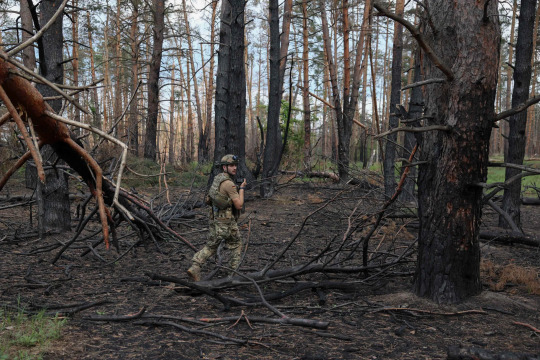
A Ukrainian soldier in the Kreminna forest, June 2023. Traces of a fire are visible. Fighting has been ongoing in this forest since October and Russian troops have not been able to force Ukrainian units out of the area.
Anatolii Stepanov / AFP / Scanpix / LETA

A camouflaged D-30 howitzer fires at Russian positions near Kreminna. Forests gave soldiers on both sides much-needed cover from skies filled with reconnaissance and attack drones.
Libkos / AP / Scanpix / LETA

A burned section of the Kreminna forest near Yampil, November 2022. The village was captured by the Russian army in May and liberated by Ukraine in September.
Andriy Andriyenko / AP / Scanpix / LETA

A mined forest strip on the Izyum–Slovyansk road. Russian soldiers called this section the Sherwood Forest. They tried from April to September 2022 to capture it, but in the end were forced to withdraw. A large number of mines and unexploded ordnance remain in the forest.
Marek M. Berezowski / Anadolu Agency / ABACAPRESS / ddp images / Vida Press

Traces of combat in Holy Mountains National Park, October 2022, when Ukraine’s Armed Forces recaptured parts of the forest on the banks of the Siverskyi Donets.
Carl Court / Getty Images
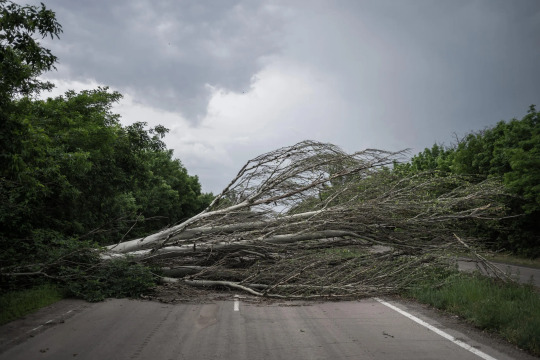
A large, old tree serves as a makeshift roadblock in the Donbas, June 2022
Bernat Armangue / AP / Scanpix / LETA

Anti-tank mines in the forest near the Mokri Yaly River, not far from Velyka Novosilka, in southern Ukraine, summer 2023. On the eve of Ukraine’s offensive, Russian troops lined all the forested tracts and strips in the southern Donetsk and Zaporizhzhia regions.
Diego Herrera Carcedo / Anadolu Agency / ABACAPRESS / ddp images / Vida Press

Burned out Russian equipment in a burned forest belt in the Kharkiv region after Ukraine’s successful fall 2022 offensive. Regional authorities are trying to clear the forests of scrap metal and are paying local residents to collect it.
Mykhaylo Palinchak / SOPA Images / Sipa USA / Vida Press

Pine trees damaged by artillery fire in a forest outside of Bucha, in the Kyiv region. Both sides in the conflict used artillery in combat near Ukraine’s capital from February to March 2022.
Pavlo Dorohoi

Fire-marked trees in the forest near Chornobyl, September 2022. At the beginning of the war, 14,000 hectares (34,600 acres) of forest burned during a month of fighting, at the beginning of the current war, in the exclusion zone created in the aftermath of the 1986 disaster at the Chernobyl Nuclear Power Plant.
Narciso Contreras / Anadolu Agency / ABACAPRESS / ddp images / Vida Press

The site of a forest fire, started during combat in spring 2022, near Chornobyl
Narciso Contreras / Anadolu Agency / ABACAPRESS / ddp images / Vida Press

Flooded trees on the Irpin River, near the village of Demydiv in the Kyiv region. Ukraine’s Armed Forces reportedly blew up a dam on the river in order to slow Russian troops’ advance on Ukraine’s capital. The Ukrainian authorities have blamed Russia for the flooding.
Nicolas Garcia / AFP / Scanpix / LETA

Flooded forest near the village of Demydiv after an explosion at a dam on the Irpin River, February 28, 2022
Yasuyoshi Chiba / AFP / Scanpix / LETA

Rocket fragments in a burned forest strip on the outskirts of Mykolaiv, August 2022
Stanislav Kozliuk / Reuters / Scanpix / LETA
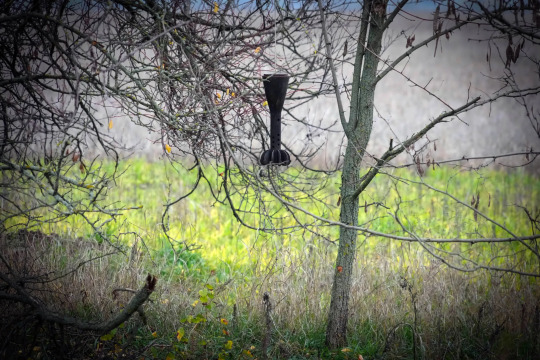
The tail end of an 85-millimeter mine, stuck in tree branches in a grove of trees in the Mykolaiv region.
Efrem Lukatsky / AP / Scanpix / LETA


Fighting in the swampy forests on islands in the Dnipro River did not stop even after flooding caused by the rupture of Kakhovka Hyropower Plant. This photo was taken near the Antonivka Bridge, where Ukrainian Armed Forces landed in June 2023.
Nicolas Cleuet / Le Pictorium Agency / ZUMA Press / Scanpix / LETA

Trees washed out during the flood after the rupture of the Kakhovka dam were carried to the Black Sea and washed ashore near Odesa
Art-Studio / Alamy / Vida Press
3 notes
·
View notes
Text
Ukrainian soldiers fight fatigue as the conflict continues into the second winter.

Ukrainian soldiers fight fatigue as the conflict continues into the second winter, After fighting Russian soldiers nonstop in the pinewood forests close to Kreminna, Istoryk, a 26-year-old soldier in eastern Ukraine, eventually fell asleep one morning. An hour later, a new gunfight broke out, bringing the senior combat medic back into action for a protracted and intense clash. This cut short his slumber. "We engaged in combat for more than 20 hours," Istoryk, using his military call sign, declared. "Non-stop fighting, assaults, evacuations, and you know, I managed it," he said on Thursday to a Reuters reporter who was paying him a visit. "And we succeeded together. We need to gather strength right now because we're not very fresh." His account of recent battles and the exhaustion he and his unit are feeling highlight the extreme pressure the war—which is in its 21st month—is placing on Ukraine's meagre resources as well as its soldiers. In Europe's worst combat since World War Two, the soldiers are also aware that Russia has a much larger force, more weaponry, and ammunition. This raises the painful question of how Ukraine will ever be able to defeat the invaders once and for all.
In an interview that was released this week, Ukraine's top commander, Valery Zaluzhnyi, spoke of a "stalemate" on the battlefield and said that a long-drawn, attritional conflict would favour Russia and would even endanger the country itself. Zaluzhnyi stated that only new capacities, including increased supplies from Western partners and locally made drones, will tilt the scales back in favour of Kyiv. The well-respected general's harsh judgment comes after a summer counteroffensive that has liberated much less area than Kyiv had planned, and just as seasonal rains are starting to fall, making it more difficult to move across muddy ground. Even while tiredness is inevitable for those in the trenches, motivation is still high. Speaking in a thick West Ukrainian dialect, Istoryk smiles charmingly as he describes his gloomy experiences. "I think so," he said in response to the question of whether he could fight for one more year or maybe two. For sure."
CHANGING SENSITIVE
Istoryk is stationed in the Luhansk region's Serebryanskyi woodland with a rifle battalion of the 67th Mechanised Brigade. Russians occupy the majority of the province. There are craters left by incoming shells all along the route to the trenches, and the blasts have split some of the burnt trees in half. This type of fighting is occurring all along the front lines, which stretch from the northeastern border with Russia's Belgorod region all the way mainly maintained.
Although Russian forces quickly withdrew from their positions in the Kherson region in early November of the previous year, more significant advances are yet possible. Muddy circumstances, however, could hinder offensive efforts. "When you are up to your knees in mud, wearing warm clothes, protective gear and a rucksack full of extra clothes, it's a whole different story," Colonel Oleksandr Popov, the commander of an artillery reconnaissance brigade whose units are also operating in the area, told Reuters this week.
His brigade's drone operators seemed less worn out than those in the surrounding combat battalions. According to Carnegie Endowment for International Peace Senior Fellow Michael Kofman, the conflict has entered a "transitional phase" in which both sides are in the driver's seat. in various locations along the front. "Overall, Ukraine's offensive in the south has either culminated or is about to," he stated.
ALSO READ: Death toll rises in Gaza, Blinken calls Israel to take measures to prevent humanitarian losses
ARMAMENTARY WARFARE
Two significant thrusts are occurring in the south, one near Orikhiv and the other south of Velyka Novosilka. Major fights are going around the eastern cities of Bakhmut, Avdiivka, and Kupiansk along the front that stretches about 1,000 km (620 miles).
Popov predicted that artillery would continue to be a vital weapon in the winter, pointing out that it worked better against more stationary targets and that the lack of trees offered minimal cover for ground forces, which harmed both sides. In the Lyman area of the front, the colonel observed a nearly three-fold decrease in the quantity of Russian artillery strikes.
Some experts said that both sides had low ammunition inventories, despite the colonel noting a nearly three-fold decrease in Russian artillery strikes in the Lyman area of the front last month compared to October 2022. "My sense is that the artillery advantage that Ukraine had for much of its offensive is now going to recede and that Ukraine's ammunition availability is going to be constrained," stated Kofman.
"Russia will also be forced to conserve ammunition, but will now increasingly benefit from the influx of supply coming from North Korea." Using long-range missiles provided by the West, Ukraine has attempted to destroy Russian air defences, aircraft, and naval assets away from the conflict in the hopes that such assaults will make it more difficult for Russia for the opposition to aid troops in the front lines.
Meanwhile, Russia has continued to attack Ukraine with drones and missiles, claiming that this is a targeted military operation, but in reality, thousands of civilians have died and essential infrastructure for transportation, power, and heating has been destroyed. The next phase of the conflict, according to 26-year-old officer Zakhid, would be difficult and a true test of the military's character back in the forests surrounding Lyman.
Source credit
SEE: Israel tackles militants from Hamas inside Gaza’s tunnels
Read the full article
0 notes
Link
[ad_1] NEAR VELYKA NOVOSILKA, Ukraine -- "We planned the offensive, went in, crushed two Russian brigades, and battered them until they pulled in all the reserves," Anatoliy, a battalion commander from the 37th Marine Infantry Brigade, said of a breakthrough on the front south of Velyka Novosilka, in Ukraine’s Donetsk region, in early June.The advance 10 kilometers deep into what had been Russian defenses along the Mokri Yaly River and the liberation of seven settlements along the way was so far one of the most spectacular episodes during Ukraine's counteroffensive. The NATO-trained, Western-equipped brigades that took part in it -- 35th, 36th, 37th, and 38th -- are among the country's most potent offensive forces.During the assault, Anatoliy’s battalion used fast Western transporters such as French AMX-10 RC armored fighting vehicles and mine-resistant American Oshkosh M-ATVs. They shot on the move to stun Russian forces until marines on foot could be deployed, he said. Guided by drones observing the battlefield the marines stormed the enemy trenches and engaged in a risky close combat."You go toward the enemy line with mines under your feet and fire coming from three directions -- it's not a nice feeling,” Anatoliy told RFE/RL, his hands resting on a Kalashnikov rifle he took as a trophy as he recalled the battle. Anatoliy, a battalion commander from the 37th Marine Brigade, on his way to visit his soldiers’ position. His last name, and those of the other soldiers cited in this story, have been withheld in conformance with Ukrainian military rules.After spending several years at war and all his adult life in the army, the 34-year-old commander said he had lost “youthful romanticism” and gotten used to “the mundane business of killing the enemy.”"If someone is waiting to see something like a Budyonny-style cavalry charge or a Soviet-type tank battle, they'd better go to a cinema," he said. At The Headquarters And In The Trenches As he spoke, Anatoliy entered the unit's headquarters, dug deep in the black soil of the Donbas steppe. The orderly, spacious, chilly dugout hosts a small group of people who determine the actions of Ukrainian soldiers on this section of the front line.On a recent visit, dozens of monitors displayed battlefield maps scaled to the level showing every tree, bush, and field border, with Ukrainian troops marked in green and Russian troops inred. The wood-clad walls were covered with printouts of drone-shot aerial photos and data charts. Soldiers sitting by their laptops took notes in rarely interrupted silence. We will push forward until I light a cigarette lying in a hammock on the shore of the Sea of Azov. "All of the fighting is happening in real-time," Anatoliy said, putting his finger on a small red square marking a Russian position on the map. "I will eliminate them tomorrow."The closest green point on the map is a Ukrainian position located 194 meters away from the Russians. The trench, retaken earlier and freshly deepened, was occupied by a handful of soldiers including Yuriy, 23, Viktor, 36, and Serhiy, 42, all recently called up and trained.There wasn't a single day without shelling from artillery, mortars, and rocket launchers, Serhiy, who had been at the position for more than three weeks, told RFE/RL. He hung his T-shirt on a branch a day before to dry in the sun -- and now it's as holey as Swiss cheese. Yuriy (right) and Viktor man trenches less than 200 meters from Russian positions. According to Viktor, who operates an anti-drone rifle, an enemy drone flies overhead every half-hour, spotting targets for artillery or trying to drop an explosive. Sometimes, the men are forced to listen to the Russian national anthem played by the soldiers on the other side of the front line. They laugh about it and crack their own jokes, despite fatigue and nervous agitation.Viktor smokes up to two packs of cigarettes per day. Serhiy thinks the war will last for an "indefinite period." Yuriy believes it will "soon end with our victory."For now, they put wooden doors in their dugout and installed a wood stove there. "We're quietly settling in, Mr. Commander," Serhiy told Anatoliy during his visit to the position. "I promise you'll get the leave when I find a replacement for you," his superior replied. Steadily Pushing Forward This may take some time: The Ukrainian counteroffensive, already in its fourth month and moving ahead slowly, is not expected to end soon -- whatever its result. The strategic drive toward the Sea of Azov, aimed at severing the “land-bridge” -- the swath of occupied territory stretching from the Russian border to the Crimean Peninsula -- seems to be far on the horizon.So far, Ukrainian forces deployed on the southern front -- more dynamic than the eastern front -- have struggled to break through the formidable Russian defenses known as Surovikin Lines, after the Russian general who developed them last winter and spring and was dismissed as commander of operation in Ukraine after Wagner mercenary group’s mutiny in late June. Anatoliy told RFE/RL that the Russians have learned from the mistakes that helped enable Ukraine to take back substantial amounts of occupied territory in the months after Moscow launched its full-scale invasion in February 2022. Now, he said, they have built solid and smart defenses, and copied some of the Ukrainian tactics."There is a lot of subtlety in how both sides conduct this war, and ultimately the winner is the wiliest," he said.Since June, Ukrainian forces have made considerable progress at two points: near Velyka Novosilka, a Donetsk region town close to the administrative border with the Zaporizhzhya region, and near recently liberated Robotyne in the western part of the Zaporizhzhya region.In both cases, the progress from village to village has come in fast-moving skirmishes carried out from one tree line to another. In between those lie wide, densely mined fields that expose any moving object to enemy fire in addition to the risk of a deadly blast underfoot. The 37th Marine Infantry Brigade is equipped almost solely with Western-made vehicles and artillery. As a result, assault operations are preceded by demining work, often carried out at night, and by prolonged phases of artillery shelling and missile strikes aimed to clear the way for closer engagement.This strategy, adopted after initial attempts to quickly break through the defense lines with mechanized and armored forces, has helped limit losses of men and equipment. But it means progress is also limited: Taking a kilometer of territory can take a week of fighting.According to Anatoliy, the marine infantry brigades are sufficiently staffed and equipped for the tasks assigned by their commanders and will press ahead with the offensive operations in the future."We will push forward until I light a cigarette lying in a hammock on the shore of the Sea of Azov," he said. Most members of the 37th Marine Infantry Brigade were called up and trained recently. The 37th Marine Infantry Brigade consists almost solely of conscripts who underwent training not only in Ukraine but also in at least one of several NATO nations: Poland, Norway, Britain, France, and Spain. The unit commanders are in touch with colleagues from NATO, and the brigade uses Western-supplied armored equipment, light tanks, artillery, and other weapons.Ukraine formed separate marine infantry brigades in May on the orders of President Volodymyr Zelenskiy. "They are a powerful force that destroys the enemy, liberates Ukrainian lands, and performs the most difficult tasks in the most difficult conditions, and we need more of this force," he said at the time. 'The Fighting Will Continue' Exactly what lies ahead for these elite units in unclear, but it almost certainly involves more fighting, at least for several weeks.U.S. General Mark Milley, the chairman of the Joint Chiefs of Staff, told the BBC on September 10 that there was “probably about 30 to 45 days’ worth of fighting weather left, so the Ukrainians aren’t done. And then the rains will come in; it will become very muddy, and it will be very difficult to maneuver at that point and then you will get the deep winter.”But Ukraine’s military intelligence chief, Major General Kyrylo Budanov, said that Ukrainian forces would adjust to the weather and that “the fighting will continue one way or another." Tanks on the way to the front line. According to Brigadier General Oleksandr Tarnavskiy, who commands Ukraine's Tavria grouping, which operates in the south, the offensive near Velyka Novosilka, which could potentially lead to a move towards the occupied port city of Mariupol, was just a distraction. Military experts say that battles in the vicinity of Tokmak, in the Zaporizhzhya region further west, will play a decisive role soon, as Ukrainian advances there would open the way to Melitopol, another occupied southern city that is crucial to the “land-bridge.” Advances in both areas bring Ukrainian artillery closer to Russian supply lines giving them opportunity to disrupt the enemy’s logistics. A Ukrainian marine infantryman from the 37th Brigade looks through the hatch of a French-made AMX-10 RC armored fighting vehicle at a position in the Donetsk region. (file photo) "I don't know what will happen in a month or two, and I don't know what will happen tomorrow," Anatoliy told RFE/RL and added after a pause: "To be precise, I know what will happen tomorrow, but I won't tell you."A week later, publicly available sources showed the long-red position located 194 meters from the trench manned by Yuriy, Viktor, and Serhiy, was marked in green -- held by Ukraine, that is, and no longer Russia. [ad_2]
0 notes
Text
GeoConfirmed UKR [CO] - Velyka Novosilka Axis "Ukrainian tank fighting in #Urozhaine, Donetsk Oblast, Ukraine." Note: On this footage UKR is fighting
GeoConfirmed UKR [CO] - Velyka Novosilka Axis"Ukrainian tank fighting in #Urozhaine, Donetsk Oblast, Ukraine.“Note: On this footage UKR is fighting for the southern part, the last part, of this village. 47.751461, 36.814508GeoLocated by @mon_mon_1064552Necro Mancer: #Урожайное, Донецкая обл., танчики https://t.me/dugout_uncle_zhora/199 #RussianUkrainianWar Source : twitter.com/GeoConfir…
0 notes
Link
Let’s hope that the cockroach army is soon so exhausted that at least portions of their front lines will just collapse.
0 notes
Text
After Suffering Heavy Losses, Ukrainians Paused to Rethink Strategy

In the first two weeks of Ukraine’s grueling counteroffensive, as much as 20 percent of the weaponry it sent to the battlefield was damaged or destroyed, according to American and European officials. The toll includes some of the formidable Western fighting machines — tanks and armored personnel carriers — the Ukrainians were counting on to beat back the Russians.The startling rate of losses dropped to about 10 percent in the ensuing weeks, the officials said, preserving more of the troops and machines needed for the major offensive push that the Ukrainians say is still to come.Some of the improvement came because Ukraine changed tactics, focusing more on wearing down the Russian forces with artillery and long-range missiles than charging into enemy minefields and fire.But that good news obscures some grim realities. The losses have also slowed because the counteroffensive itself has slowed — and even halted in places — as Ukrainian soldiers struggle against Russia’s formidable defenses. And despite the losses, the Ukrainians have so far taken just five of the 60 miles they hope to cover to reach the sea in the south and split the Russian forces in two.One Ukrainian soldier said in an interview this week that his unit’s drone picked up footage of a half-dozen Western armored vehicles caught in an artillery barrage south of the town of Velyka Novosilka.“They all burned,” said the soldier, who identified himself as Sgt. Igor. “Everybody is hoping for a big breakthrough,” he said, adding a plea that those scrutinizing from afar appreciate the importance of slow and steady advances.Russia had many months to prepare for the counteroffensive, and the front is littered with mines, tank traps and dug-in troops, while Russian reconnaissance drones and attack helicopters fly overhead with increasing frequency.Given those fortifications, experts say, it is not surprising that Ukraine would sustain relatively severe losses in the early stages of the campaign.This week, Ukraine’s president, Volodymyr Zelensky, acknowledged that there had been a brief pause in operations some weeks ago but blamed it on a lack of equipment and munitions, and called on Western allies to quicken the pace of deliveries.American officials acknowledged that pause and said that the Ukrainians had begun moving again, but more deliberately, more adept at navigating minefields and mindful of the casualty risks. With the influx of cluster munitions from the United States, they said, the pace might pick up.“It’s not as fast, but it’s not catastrophically behind schedule,” the British defense minister, Ben Wallace, said on Wednesday. “It is doing what anyone else would do having to fight through minefields towards the Russian line.”The problems come into focus out in the farm fields in southern Ukraine where much of the counteroffensive is being fought. There the Bradley Fighting Vehicles, long coveted by the Ukrainians, have been running over anti-tank mines on a daily basis, soldiers who have fought in the vehicles say.The vehicles, which weigh about 34 tons, are designed to carry infantry soldiers through areas exposed to gunfire or artillery. A rear ramp opens to allow soldiers to pile out and fight. In planning for the counteroffensive, the Bradleys were meant to carry soldiers across open fields to reach Russian trenches and bunkers.The Bradleys have done part of their job well; their thick armor has provided good protection for most soldiers, who have survived many of the mine blasts with few injuries.“Your ears ring and things inside fly around,” said one soldier, who asked to be identified only by his first name and rank, Pvt. Serhiy. He survived such an explosion last month in fighting south of the town of Orikhiv in the Zaporizhzhia region. But in many cases the blasts severely damaged the vehicles, immobilizing them well before they could reach the Russian lines.Military experts have long said that the first 15 miles of the counteroffensive would be the hardest, as attacking troops generally need three times more power — whether in weapons, personnel or both — than defending forces.Ukraine’s top military officer, Gen. Valery Zaluzhny, expressed frustration that Ukraine is fighting without Western F-16 warplanes, which the United States only recently agreed to allow Ukrainian pilots to be trained on, but which are not expected to be delivered for several months at least. That has left the Ukrainian troops vulnerable to the Russian helicopters and artillery.Military analysts cautioned that it was still too early to draw definitive conclusions about the counteroffensive. “It does not mean that it is doomed to fail,” said Camille Grand, a defense expert at the European Council on Foreign Relations and a former NATO assistant secretary general.Nevertheless, he added, the absence of air superiority and air defenses that Western jets could provide for Ukraine’s attack means “that casualty rates are likely to be higher than in other conventional conflicts.”The precise numbers of weapons and armored vehicles that have been destroyed in the counteroffensive, as opposed to “mobility kills” that can be repaired, are closely guarded secrets, and the U.S. officials did not give raw numbers, though they did agree on the percentages of weaponry lost. But a combination of open source data and official estimates can provide a snapshot in time of the destruction, particularly in the early going.Ukraine’s 47th Mechanized Brigade, one of the three Western-equipped and trained units that were deployed early in the campaign, was set to receive 99 Bradleys, according to the leaked U.S. military plans for the counteroffensive from February — still the most recent that have been made public.Data from Oryx, a military analysis site that counts only losses that it has visually confirmed, show that 28 of those Bradleys have been abandoned, damaged or destroyed, including 15 in a village in Zaporizhzhia Province on June 8 and 9 as the 47th was attacked by helicopters while trapped in a minefield. Six additional Bradleys were reported abandoned or destroyed in Mala Tokmachka on June 26, but Oryx researchers said these losses had occurred earlier, although it is not clear exactly when.Given that the 47th was the only brigade initially slated to receive the Bradleys, that means that nearly one-third of the original vehicles have been lost — although all but seven of them were blown up at one battleground.“It is within the realm of possibility that Ukrainian forces have seen losses at this level,” said Dylan Lee Lehrke, an analyst with the British security intelligence firm Janes, adding that a “significant” level of lost weapons was generally a hallmark of wars of attrition, like the one in Ukraine.The Oryx data show that only 24 tanks were lost for the entire month of June, including some from Ukraine’s own arsenal in addition to those supplied by Western allies.Ten of them were German-made Leopard tanks and mine-clearers, the data show. Presumably, they were lost in battle with Ukraine’s 33rd Mechanized Brigade, one of the three units deployed early in the counteroffensive, and which was slated to receive 32 Leopards in the U.S. planning documents from Feb. 28.That would mean that the brigade lost 30 percent of the Leopards it was given — all but two of them in the first week of fighting, the Oryx data show.The Ukrainian authorities say the army has so far advanced the deepest in southern areas of the Donetsk region, but no more than about five miles from the former front line at Velyka Novosilka. It faces another 55 miles to reach the Sea of Azov, a primary goal of the counteroffensive, as it would cut the land bridge to Crimea, wreaking havoc with Russia’s already shaky logistics. Ukraine’s forces are also advancing in two areas in the Zaporizhzhia region.It is even slower near Orikhiv in the Zaporizhzhia region, where the bulk of Bradleys and Leopards have been sent to an area of open fields with little cover, There, Ukraine’s army has advanced only about a mile.Justin Scheck contributed reporting from London.
Source link
Read the full article
0 notes
Text
Lính Ukraine kể về 'bức tường thép' của Nga
Binh sĩ Ukraine mô tả tuyến phòng thủ tầm xa của Nga giống như "bức tường thép", khiến các đoàn xe thiết giáp không thể xuyên thủng.
Đợt tấn công bắt đầu hôm 8/6 với khoảng 100 quân nhân, hai xe tăng chiến đấu chủ lực Leopard 2A6 và nhiều xe chiến đấu bộ binh M2A2 Bradley do Mỹ sản xuất, một binh sĩ Ukraine tham gia trận chiến kể với WSJ. Kế hoạch của họ là hiệp đồng với hai mũi tiến công khác để tiến công vào thị trấn Tokmak do Nga kiểm soát ở phía nam tỉnh Zaporizhzhia.
Ngay khi trung đoàn Ukraine vượt qua con đường ở ngoại ô thị trấn Mala Tokmak, pháo phản lực BM-21 Grad của Nga bắt đầu bắn phá dữ dội vào đội hình của họ, trong khi toàn bộ cánh đồng xung quanh bị cài mìn. Trực thăng và tiêm kích Nga cũng liên tục quần thảo ở khu vực gần đó.
Lính Ukraine tham chiến tại hướng Kreminna ở tỉnh Lugansk hôm 9/6. Ảnh: AP
Quân đội Nga đã dành nhiều tháng để xây dựng tuyến phòng thủ đa tầng ở tỉnh Zaporizhzhia, nhằm ngăn nguy cơ lực lượng Ukraine cắt đứt hành lang trên bộ nối từ vùng Donbass đến bán đảo Crimea. Địa hình trống trải ở Zaporizhzhia cũng khiến các đơn vị thiết giáp Ukraine dễ bị phát hiện và tập kích bằng nhiều loại hỏa lực từ trước khi họ tiếp cận được phòng tuyến của Nga.
Các quan chức Ukraine không đề cập nhiều tới tiến độ phản công, nhưng khẳng định chiến dịch này sẽ mất nhiều thời gian và thương vong là không thể tránh khỏi.
Trước chiến dịch phản công, các nước phương Tây đã viện trợ lượng vũ khí trị giá hàng tỷ USD cho Ukraine, đồng thời huấn luyện hàng chục nghìn quân nhân cho nước này. Kiev cần chứng minh với các đối tác rằng nỗ lực đó có thể chuyển hóa thành những bước tiến lớn trên chiến trường.
Giới phân tích quân sự phương Tây cho rằng cuộc phản công chính còn chưa bắt đầu, khi phần lớn vũ khí hiện đại do Mỹ và đồng minh cung cấp vẫn vắng bóng trên các mặt trận.
Một số đơn vị Ukraine ở rìa phía đông tỉnh Zaporizhzhia tuyên bố họ đang nắm lợi thế. Trưởng xe rà phá mìn có biệt danh Finn nói rằng lực lượng hải quân đánh bộ Ukraine đang chiếm được vài khu vực nhỏ gần làng Velyka Novosilka ở tỉnh Donetsk, giúp họ tăng cường sĩ khí.
"Chúng tôi chắc chắn sẽ chịu thương vong, nhưng luôn tìm cách khiến đối phương tổn thất nhiều hơn", Finn nói, thêm rằng điều kiện ẩm ướt ở khu vực này đặt ra nhiều thách thức với khí tài do phương Tây cung cấp.
Sau hai tuần mưa không ngớt, những xe thiết giáp kháng mìn MaxxPro do Mỹ chế tạo đôi khi bị sa lầy trên nền đất mềm do gầm quá thấp. "Chúng được thiết kế cho tác chiến đô thị và sa mạc. Chúng tôi thường phải đánh vật với chúng khi vận hành", Finn cho hay.
Các lữ đoàn "nắm đấm thép" được Ukraine xây dựng và trang bị theo chuẩn NATO cũng gặp khó khăn vì một số sĩ quan chưa được huấn luyện đầy đủ, thiếu kinh nghiệm chiến đấu thực tế. "Họ thường mất phương hướng trong những tình huống căng thẳng", Finn thừa nhận.
1 note
·
View note
Text
#Breaking: #Ukrainian military confirms #liberation of #Storozheve, #Donetsk Oblast.
⚡️Ukrainian military confirms liberation of Storozheve, Donetsk Oblast.
Ukraine's forces have liberated the village of Storozheve three kilometers south of Velyka Novosilka in Donetsk Oblast, the Tavriisk defense forces' press center reported on June 12.https://t.co/a9n1zJpUpM
— The Kyiv Independent (@KyivIndependent) June 12, 2023
Source: Twitter
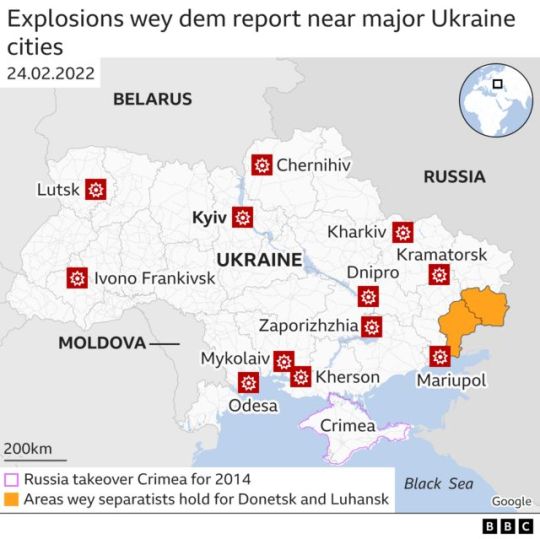
View On WordPress
0 notes